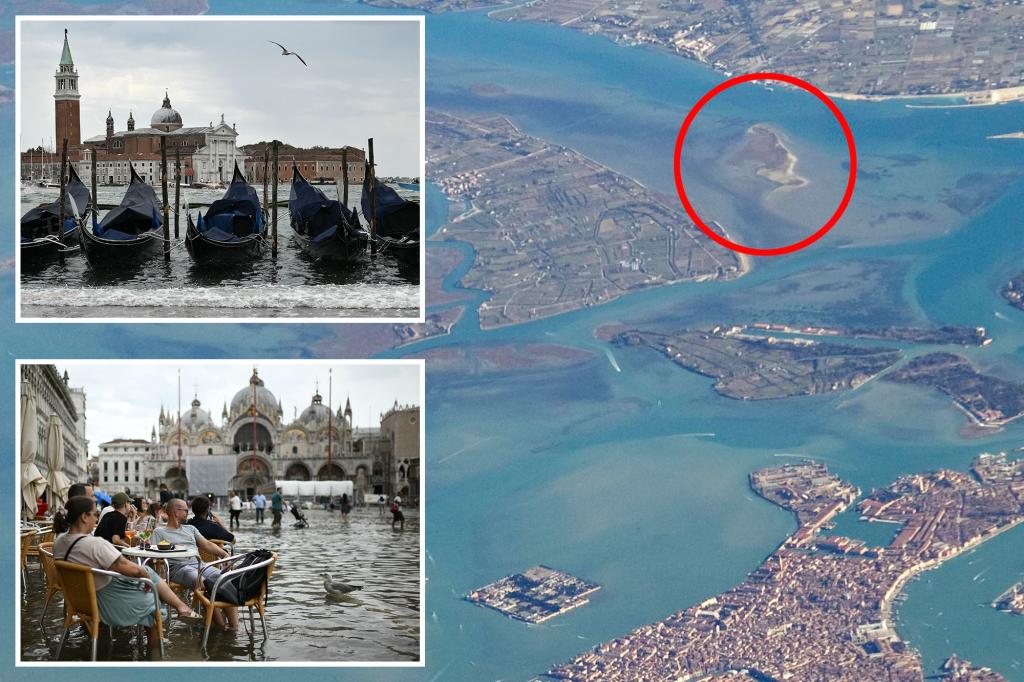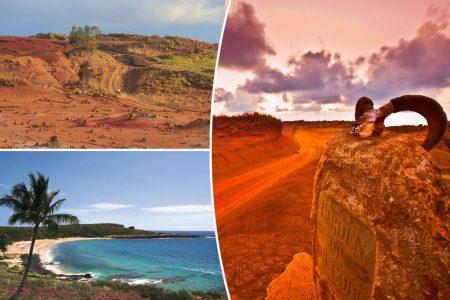Summarize this content to 2000 words in 6 paragraphs
New land ahoy!
Bacan is located off the shores of Venice offering a plot of land 820 feet wide and 33 feet long.
The tiny strip of sand used to only emerge from the city’s lagoon in the summer when the waters receded but has become habitable year-round since the city erected flood barriers.
The Mose flood barrier that has been protecting Venice from sea surges since it opened in 2020 has also helped to keep Bacan afloat.
“The barrier … accelerates the flow of water into the lagoon when it is open, meaning more sand comes in, helping sustain Bacan,” Giovanni Cecconi, an engineer who worked on the barrier, explained to The Times.
“And by raising the barrier in winter to stop high waters, the island is protected from the surges that used to erode it.”
Bacan was last submerged in winter of 2020.
On the islet, Venetians can now escape the tourists overcrowding their city to sit in the sun and hunt for shellfish among the thickets of the island’s new vegetation.
“It is a new ecosystem and shows that the lagoon can evolve in a positive way in parallel with human intervention,” Cecconi said.
However, some experts believe the barriers are disrupting the natural balance of the lagoon as the structures block the storm surges from the inflow of silt — an essential part of the marshes that spread out in the lagoon.
Preserving the salt marches is an integral part of fighting climate change — they absorb 30 times as much carbon as a forest — which has increasingly disrupted and destroyed Venice.
Bacan has emerged as Venice continues to drown in water and tourists.
To stay afloat, the Italian hub has banned large tourist groups and begun charging entry fees along with placing the flood barriers.
Earlier this year, Italian officials announced measures to limit large tourist groups in the historic sinking city, as part of a campaign to curb congestion on the often narrow streets and waterways of the historic hotspot.
Beginning this summer, tourist groups were said to be limited to 25 people — around half the capacity of a double-decker bus.
Venice also began charging day trippers a 5 euro ($5.36) entry fee this spring, reportedly in order to protect the UNESCO World Heritage Site from the adverse effects of over-tourism — but weary locals say the measure is just a drop in the bucket, and could end up sinking the struggling city.
The efforts are part of an ongoing campaign to reduce visitation to the City Of Canals, which reportedly absorbs a whopping 30 million people per year, many of whom visit for the day.
Unfortunately, Venice is struggling with more than over tourism.
The lagoon city is slowly sinking into the ocean due to rising sea levels fomented by climate change and overdevelopment.
That’s why an escape like Bacan is appreciated by the locals — as long it’s kept a secret from tourists and developers.
“What we need to avoid are ice cream kiosks and luxury hotels,” Cecconi said.















